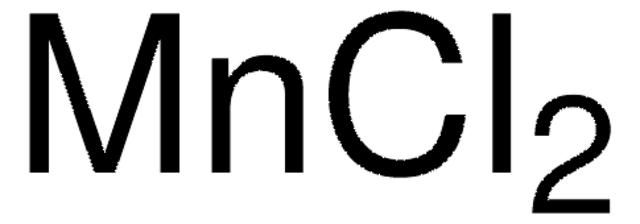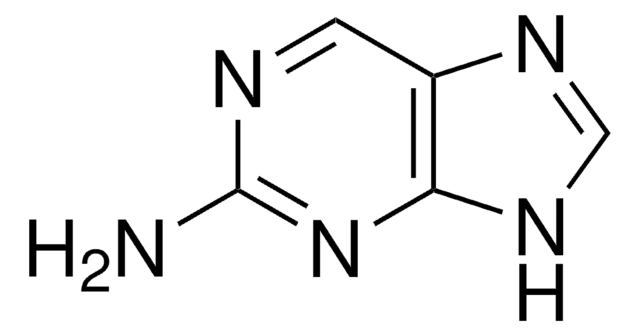推荐产品
等級
AR
產品線
Vetec™
化驗
≥99%
形狀
crystalline powder
pH值
5.0-6.0 (5%)
mp
652 °C (lit.)
密度
2.98 g/mL at 25 °C (lit.)
負離子痕跡
sulfate (SO42-): ≤0.005%
正離子痕跡
Ba: ≤0.01%
Ca: ≤0.03%
Cu: ≤0.0005%
Fe: ≤0.0005%
K: ≤0.01%
Mg: ≤0.005%
Na: ≤0.05%
Ni: ≤0.002%
Zn: ≤0.005%
heavy metals (as Pb): ≤0.0005%
SMILES 字串
Cl[Mn]Cl
InChI
1S/2ClH.Mn/h2*1H;/q;;+2/p-2
InChI 密鑰
GLFNIEUTAYBVOC-UHFFFAOYSA-L
正在寻找类似产品? 访问 产品对比指南
法律資訊
Vetec is a trademark of Merck KGaA, Darmstadt, Germany
訊號詞
Danger
危險聲明
危險分類
Acute Tox. 3 Oral - Eye Dam. 1 - STOT RE 2
標靶器官
Brain
儲存類別代碼
6.1D - Non-combustible acute toxic Cat.3 / toxic hazardous materials or hazardous materials causing chronic effects
水污染物質分類(WGK)
WGK 2
閃點(°F)
Not applicable
閃點(°C)
Not applicable
Jerome A Roth et al.
Toxicology in vitro : an international journal published in association with BIBRA, 26(7), 1143-1149 (2012-07-31)
Mutations in the parkin gene are linked to development of juvenile onset of Parkinson's disease and recent studies have reported that parkin can protect against increased oxidative stress and mitochondrial dysfunction caused by a variety of oxidative and toxic insults.
Marta Sidoryk-Wegrzynowicz et al.
Journal of neurochemistry, 122(4), 856-867 (2012-06-20)
Manganese (Mn) has been implicated in the impairment of the glutamate-glutamine cycling (GGC) by deregulation of Glu and glutamine (Gln) turnover in astrocytes. Here, we have examined possible mechanisms involved in the Mn(II)-mediated disruption of Glu turnover, including those related
Jerome A Roth et al.
Neurotoxicology, 35, 121-128 (2013-01-15)
Chronic exposure to Mn results in the development of a neurological disorder known as manganism characterized by neurological deficits resembling that seen in Parkinsonism. Although dopaminergic neurons within the nigrostriatal pathway appear intact, Mn-induced irregularities in DA transmission have been
Geoffrey J Topping et al.
Medical physics, 40(4), 042502-042502 (2013-04-06)
Manganese(II) is employed as a contrast agent with magnetic resonance imaging (MRI) for study of neuronal activation in rats and mice. However, at the concentrations required for MRI, Mn may induce pharmacological or toxic effects. Positron emission tomography (PET) imaging
A G Kanthasamy et al.
Toxicology letters, 214(3), 288-295 (2012-09-22)
The role of normal cellular prion protein (PrP) remains to be fully elucidated; however, the protein is crucial for the infection and progression of prion diseases. Recent evidence indicates that PrP is a metalloprotein since the octapeptide repeat sequences in
我们的科学家团队拥有各种研究领域经验,包括生命科学、材料科学、化学合成、色谱、分析及许多其他领域.
联系技术服务部门




